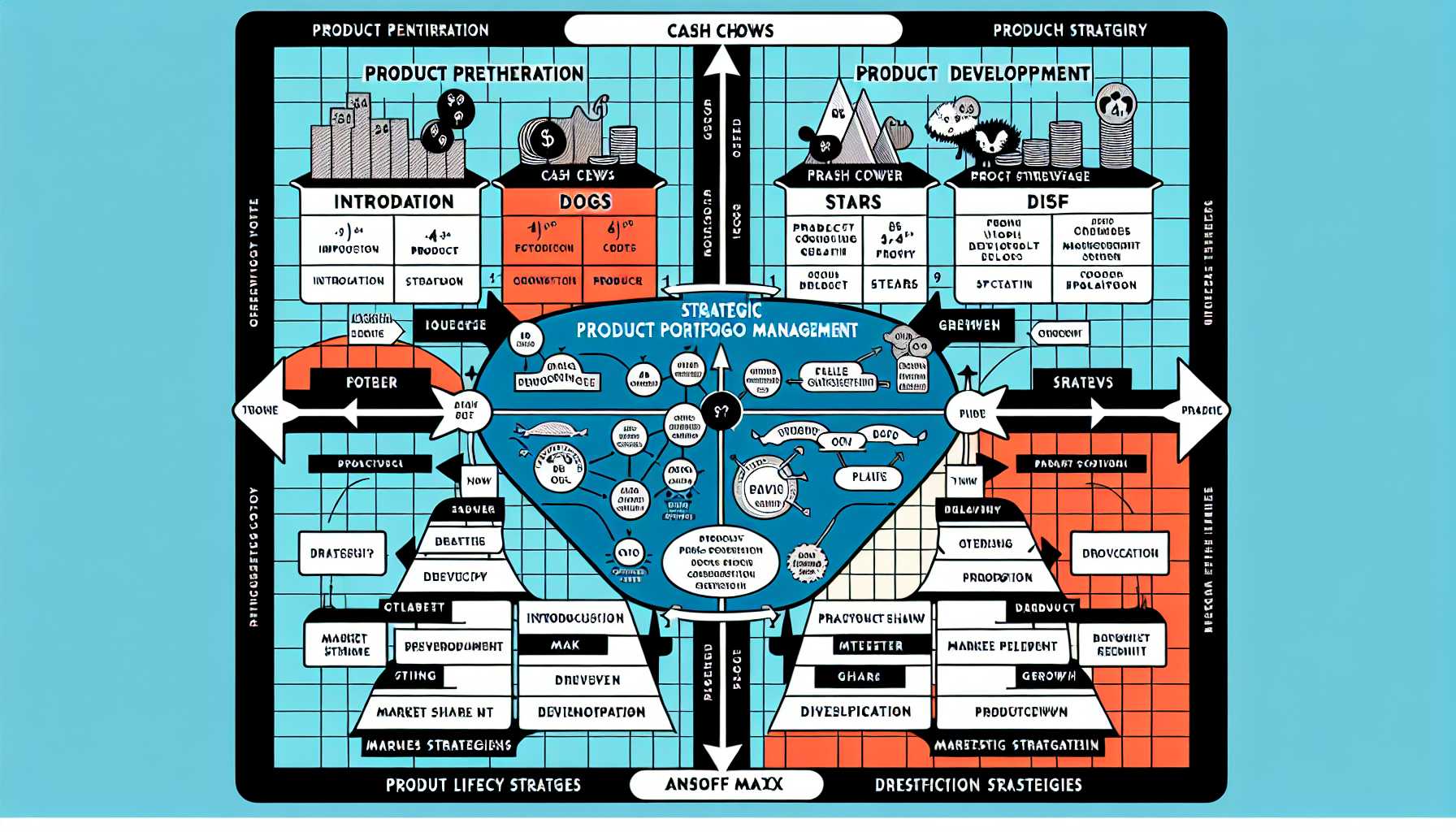Strategic Product Portfolio Management: Aligning with Business Strategy
Welcome back to our blog where we dive into the intricate art of product management. Today, we’re tackling a vital aspect that seasoned product managers grapple with: product portfolio management aligning with overall business strategy. Ensuring that our product efforts steer in the right direction requires a harmony between market demands, company capabilities, and strategic vision—a triad that demands our careful attention.
Introduction to Product Portfolio Management
Product portfolio management is the process of overseeing all products within a company’s portfolio. It is a high-level decision-making exercise that helps determine the best mix of products to invest in, develop, maintain or phase out to meet business objectives.
Understanding the Business Strategy
The alignment of product portfolios begins with a deep understanding of the business strategy. This strategy sets the stage for all operational decisions. As product leaders, we’re tasked with interpreting and translating strategy into actionable product plans.
Adapting Product Strategy
In my experience, one pivotal moment was the transformation of a legacy system which although profitable, became misaligned with the business’s forward-looking digital strategy. The key was not just incremental improvement but a strategic pivot—redirecting resources to foster innovation that was attuned to the strategic shift.
Communication Across Departments
Communication between product management and top-level management is critical. Regular strategy discussions ensure that the product portfolio is always serving the evolving business objectives. For instance, when I led product for a SaaS company, establishing a bi-weekly sync with C-level executives was transformative.
Strategically Managing a Diverse Portfolio
A diverse portfolio often involves products at different stages of the lifecycle, addressing varied market segments and having differing impacts on your revenue. Prioritizing where to invest is a challenge.
The BCG Matrix
A tool that I’ve found invaluable is the BCG matrix—an organisational framework which categorises products into four quadrants based on market growth and market share, helping decide where to invest.
In Practice
I recall applying the BCG matrix during the rapid expansion phase of a mobile app suite. The results not only informed product development decisions for ‘Stars’ and ‘Question Marks’ but also guided us on whether to divest ‘Dogs’ or milk ‘Cash Cows’.
Incorporating the Product Life Cycle
Understanding the life cycle stage of each product within the portfolio is key. At an AI startup I was a part of, we had to balance between our flagship AI platform in its growth phase, and a mature analytics tool. Managing investments between these required a keen eye on life cycle stages and market trends.
The Ansoff Matrix
The Ansoff Matrix is another strategic tool that guides decision-making by matching products with market strategies, including market penetration, product development, market development and diversification.
Real-World Application
Using the Ansoff Matrix, we once identified a diversification opportunity for an online advertising tool, which led to exploring a new market segment that significantly boosted our market presence.
Assessing Portfolio Balance
Using portfolio management tools and frameworks, you should focus on maintaining a balance that aligns with your strategic threshold for risk, innovation, and growth.
Risk-Reward Balancing
While at a fintech firm, we regularly reviewed the product risk profiles. Higher-risk projects promised game-changing rewards but needed to be balanced with reliable earners to ensure financial stability.
Responsive Portfolio Adjustments
Finally, responsiveness to market changes is critical. During the pandemic, we had to pivot the portfolio at an edtech firm quickly. It involved accelerating the development of remote learning tech to align with the sudden shift in market needs.
Conclusion
Reflecting on past experiences and industry practices, it’s clear that aligning product portfolio with business strategy requires robust frameworks, a willingness to adapt, and strong inter-departmental communication. Establishing these best practices as habits enables us, as product leaders, to navigate the seas of strategic decision-making with confidence.
Tools for Strategic Alignment
Remember, effective portfolio management is about selecting the right mix of tools and applying them mindfully:
- BCG Matrix for investment allocation.
- Ansoff Matrix for growth strategies.
- Product Life Cycle for timing decisions.
- Risk Management Frameworks for balance.
- Regular strategic reviews to stay aligned.
By consistently applying these tools, and reflecting on past experiences, you can ensure that your product portfolio not only aligns with but actively propels your business strategy forward.
Until our next deep dive, keep aligning and innovating.

